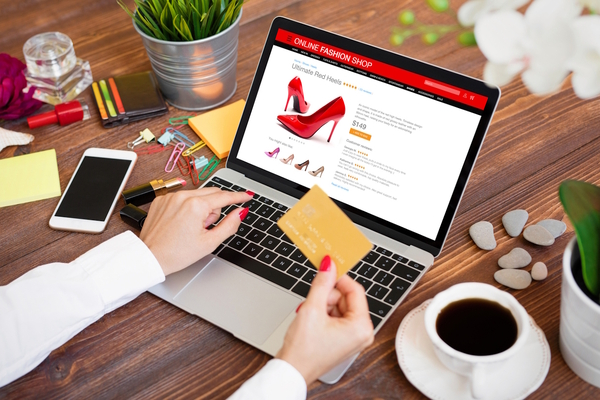The marketplace model for retail

Jason Wyatt at Marketplacer explains how retailers can take strategic leaps using the marketplace model
The number of third-party marketplaces operating globally has grown more than 500% since 2007, accounting for 64% of ecommerce sales in the UK. According to OC&C Strategy Consultants, the rise of the online marketplace model represents the largest fundamental shift in consumer spending since the emergence of ecommerce in the 1990s.
With marketplaces set to seize an ever-growing share of online shopping spend, the prospect of adopting a marketplace model is tempting for high street retailers looking to find new ways to diversify and grow revenue.
When it comes to exploring this potential new market opportunity, however, these businesses will need to keep in mind some key considerations if they want to assure long-term success.
What is an online marketplace?
A marketplace with third-party products is an online platform connecting potential buyers with a selection of third-party vendors. There are three different types of marketplaces (and a host of hybrids) which each operate and add value to consumers and brands in slightly different ways:
- Pure marketplaces are platforms like eBay that link buyers and sellers. The site exists to handle the marketing, sale, payment processing and sometimes fulfilment and delivery of goods
- Mixed marketplaces, like Amazon, do this as well, but also sell their own-label products which are often in direct competition with other sellers using their site
- Retailer-operated marketplaces are marketplace sites which are run by retailers alongside their online presence and act as a platform to extend their reach into selling third-party products which typically compliment their core range.
Providing consumers with greater convenience and choice, marketplaces offer shoppers a gateway to discover a huge selection of products that are accessible in one place. Until recently, established pure marketplaces like eBay and mixed marketplaces like Amazon have dominated the market selling a breadth of products.
However, more specialist marketplaces have emerged in recent years. For example, Etsy has become the go-to-destination for handcrafted and vintage items.
In response to changing digital shopper behaviours, a number of UK high street retailers are now moving into the space. Big brand names like Superdrug and B&Q are going live with marketplaces that give customers a seamless way to access new and innovative products. An increasing number of retailer-operated marketplaces have emerged. For example, French supermarket Carrefour has a separate marketplace site selling third-party organic and niche foods that compliments its core ranges.
What’s the opportunity?
Marketplaces enable retailers to diversify their offering across both drop ship or marketplace models and capture new revenue. Alongside responding fast to consumer trends, retailers can utilise marketplaces to explore new categories in a low-risk manner. This enables them to undertake a curated range extension strategy to entice consumers to shop more regularly and attract a new customer base. All the while keeping their brand ‘front of mind’ with shoppers, for whom the marketplace represents a trusted online shopping destination.
Representing an opportunity to combine the strength of their traditional retail business with the scale and value proposition of a marketplace, retailers can leverage marketplaces to take their e-commerce business in new directions and grow beyond the limitations of their current operations and infrastructure. They can create curated marketplaces and experiences, featuring complimentary partner brands and sellers, that increase customer engagement and lifetime value and loyalty.
Launching a marketplace
Defining the marketplace strategy represents a critical first step for creating a brand presence that will stand out. Ideally, retailers should look to host sellers and products that are aligned and tailored to their own brand. To unlock success for all, it will be important to determine what support needs to be in place to ensure these suppliers are able to hit the ground fast and can sell effectively. Best practices include:
- Top down buy-in: Lots of organisational change is required when launching a marketplace and it touches all consumer touch points, so all these need to be considered. Without top level buy-in it’s difficult to undertake organisational change, causing fragmentation.
- Clear CVP: Organisations should have a clear and compelling customer value proposition that addresses a specific need or problem. This should also set the marketplace apart from competitors.
- Curated sellers and products: A curated range of products and services is essential. Organisations should carefully select and curate sellers based on quality, relevance, and alignment with their ethos. Range should align with CVP and niche.
- Trust and transparency: As third-party sellers fulfil products on behalf of the brands, trust and transparency is key. Establishing transparent seller ratings and reviews, clearly outlining terms and conditions, and ensuring secure payment processing, is essential. It’s also important to Implement policies for dispute resolution and returns, demonstrating a commitment to user satisfaction and fair transactions.
Fast, easy, flexible and smart
"It takes too long and costs too much," is a common sentiment customers share when adopting a third-party marketplace. However, it doesn’t have to. For established retailers, extending an existing enterprise-grade commerce platform with specialist marketplace software is the most streamlined and fastest way to stand up a marketplace destination.
Seller experience is central to success, so sellers need a suite of integration options to connect their source systems, mapping tools to help onboard their products, and clear reporting and insights to best understand their next best action. To sustain and expand their marketplace, retailers also need to be certain they can pivot fast in response to evolving customer and seller expectations and needs.
Featuring the scalability needed to assure uptime and performance during periods of peak demand and power geographic expansion, today’s software-as-a-service marketplace platforms provide the enterprise-grade functionality and all-important extensibility retailers will need as their marketplace strategies evolve.
Today’s cutting-edge solutions make it easy to dynamically add products, suppliers and new features. It’s easy to capture data insights, to keep a handle on transactions and commissions, to manage how connected businesses - including drop-ship sellers - sell and fulfil orders, and to rollout new revenue models or capabilities to a seller network.
These API-first modular platforms also make it easy to seamlessly integrate other technologies and tackle challenges like handling different tax regimes across multiple geographies or mitigating online fraud.
Assuring sustainable revenue growth
By harnessing the power of digital connectivity, retailers can build successful and scalable online marketplaces that boost customer engagement and position their brand at the forefront of the discovery phase of the shopping experience. Creating value propositions and a sense of community that resonates with today’s shoppers.
With the right marketplace strategy and technology in play retailers can initiate a future-proofed and scalable marketplace destination that can be easily customised and evolved. Unlocking new revenue streams and greater customer stickiness while growing the audience of shoppers that visit their website.
Jason Wyatt is CEO at Marketplacer
Main image courtesy of iStockPhoto.com

Business Reporter Team
Most Viewed
23-29 Hendon Lane, London, N3 1RT
23-29 Hendon Lane, London, N3 1RT
020 8349 4363
© 2024, Lyonsdown Limited. Business Reporter® is a registered trademark of Lyonsdown Ltd. VAT registration number: 830519543
Join the Business Reporter community today and get access to all our newsletters, and our full library of talk show episodes
Join the Business Reporter community today and get access to all our newsletters, and our full library of talk show episodes





